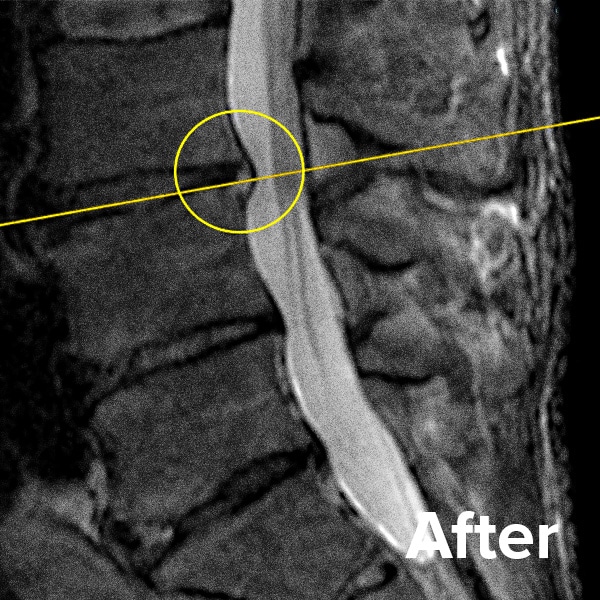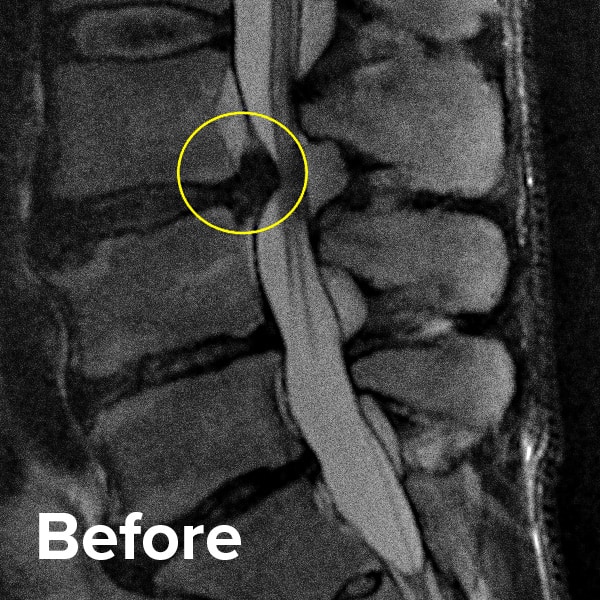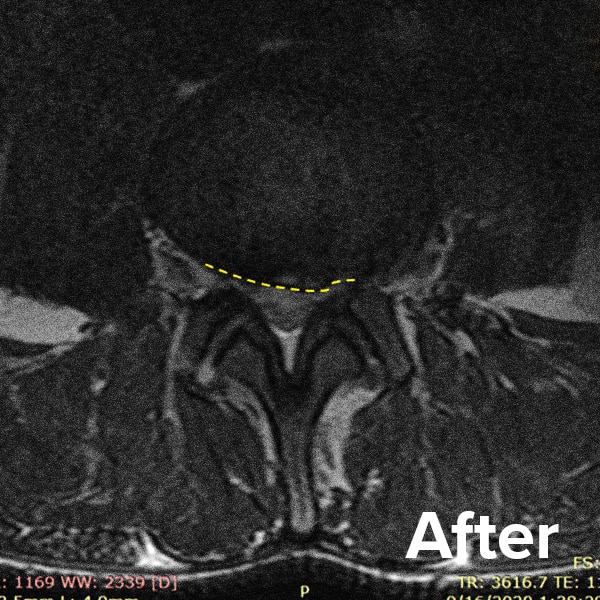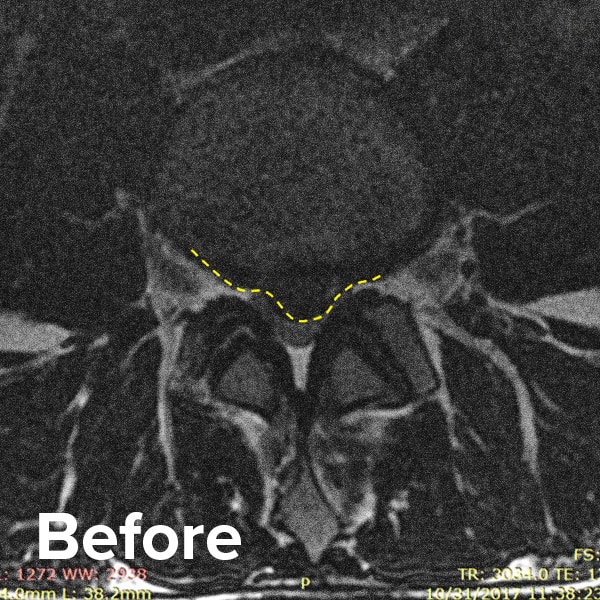Alternative Herniated Disc Treatments In Phoenix, AZ -Mountain View
Understanding How A Herniated Disc Develops
Spinal discs act as cushions between the vertebrae in your spine. Each disc has a tough outer layer called the annulus fibrosus and a soft, gel-like center known as the nucleus pulposus. A herniated disc occurs when the outer layer tears, allowing some of the inner material to escape. This can put pressure on nearby spinal nerves or the spinal cord, leading to localized pain at the site and radiating symptoms such as tingling, numbness, weakness, or pain in the arms or legs.
Herniated discs are sometimes called slipped or ruptured discs, though these terms can be misleading. Unlike a disc bulge, where the inner material remains contained, a herniated disc involves a breach in the disc wall, allowing the internal gel to move outside its normal boundaries.
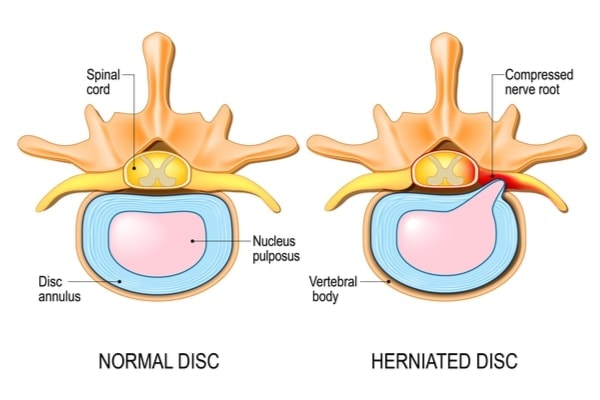
How Is a Herniated Disc Treated?
Initial treatment for a herniated disc often includes conservative measures such as physical therapy, acupuncture, prescription medications, or epidural steroid injections. While steroid injections may help reduce inflammation and pain temporarily, repeated use can affect healthy tissue and may interfere with the body’s natural repair processes.
If symptoms persist, surgery may be recommended to remove part of the herniated disc. While this approach may reduce pressure on nearby nerves, it can also compromise the structural integrity of the disc, increasing the risk of future injury. In more advanced cases, spinal fusion may be suggested. This procedure involves permanently joining two or more vertebrae with hardware, which can reduce motion but may also place additional stress on the surrounding segments over time.
Recovery Timeline for Herniated Discs Without Surgery
At Mountain View Headache and Spine Institute in Phoenix, Arizona, many patients with herniated discs find that symptoms improve naturally over time. Research indicates that for a majority of individuals, pain from a herniated disc may decrease on its own as inflammation subsides and the body adapts. Staying active, as tolerated, and managing symptoms conservatively are often part of the initial care approach.
For those who continue to experience significant or long-lasting pain, including lower back pain, leg discomfort, or tingling and numbness in the feet, additional treatment may be necessary. In these cases, surgery is not the only option.
Physicians in the licensed Regenexx network at our clinic offer image-guided procedures using Regenexx lab processes. These non-surgical procedures aim to reduce inflammation and support the body’s natural repair mechanisms, typically with less downtime, minimal reliance on opioids, and little to no interruption to daily activities.
Regenexx PL Injectate: Avoiding the harmful side effects of epidural steroids and back surgery
2222 East Highland Avenue
Phoenix, AZ 85016
Request an Appointment
Call to Schedule Schedule OnlineClinic Hours
| Sunday | Closed |
| Monday | 8AM–4PM |
| Tuesday | 8AM–4PM |
| Wednesday | 8AM–4PM |
| Thursday | 8AM–4PM |
| Friday | 8AM–4PM |
| Saturday | Closed |
Non-Surgical Options for Herniated Disc Treatment
Outpatient procedures using Regenexx injectates involve precisely guided injections of your body’s own healing components into the areas of spine damage. These procedures may use your own blood to create highly concentrated platelet-rich plasma (PRP) or bone marrow concentrate (BMC), which contains cells that support the body’s natural repair processes.
For herniated disc cases, treatment may include a Regenexx PL injectate, a refined form of PRP called platelet lysate, designed for use near sensitive spinal structures such as nerve roots. This injectate is prepared in a specialized process and used to help calm inflammation and support healing.
At Mountain View Headache and Spine Institute in Phoenix, AZ, physicians in the licensed Regenexx network use real-time imaging to deliver these treatments with precision. The goal is to use the least invasive, most targeted approach that supports improved function, and the physician will determine the most appropriate orthobiologic based on your condition and goals.
Herniated Disc MRI
The MRI images below show the spine of a patient treated for a subligamentous disc herniation with a Regenexx PL injectate. Following the image-guided procedure, the patient reported a significant reduction in discomfort and was able to resume normal activities within several weeks.
Use the slider to view the pre-treatment MRI on the right, where the lighter area indicates disc damage. Slide left to see the follow-up MRI captured two years after the procedure. These images provide a visual comparison of changes over time in one patient’s case.
Herniated disc before and after MRI images 1
Herniated disc before and after MRI images 2
Request an Appointment
Webinar: Exploring Non-Surgical Options for Back Pain

Join Chris Centeno, MD, founder of Regenexx, for an educational webinar on how image-guided procedures using Regenexx lab processes may help address herniated disc-related pain without surgery, and with less downtime.
In this free session, you’ll learn:
- How Regenexx procedures using bone marrow concentrate (BMC) and platelet-rich plasma (PRP) compare to surgical and traditional spine care approaches
- What to expect before, during, and after the procedure
- Answers to frequently asked questions about orthobiologic treatment options
